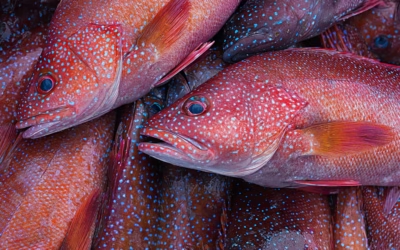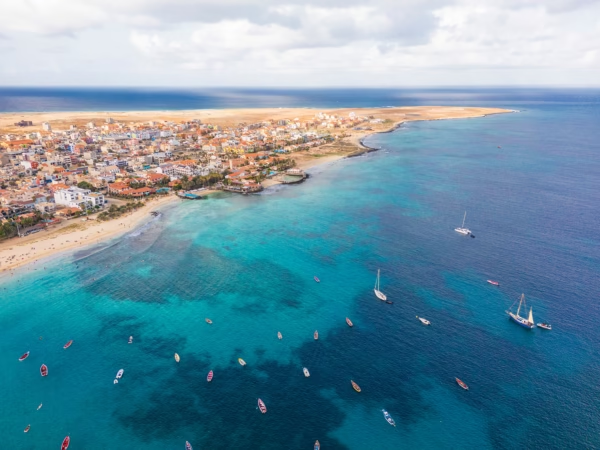Yellow Desert Hyacinth: the Strange and Beautiful Alien
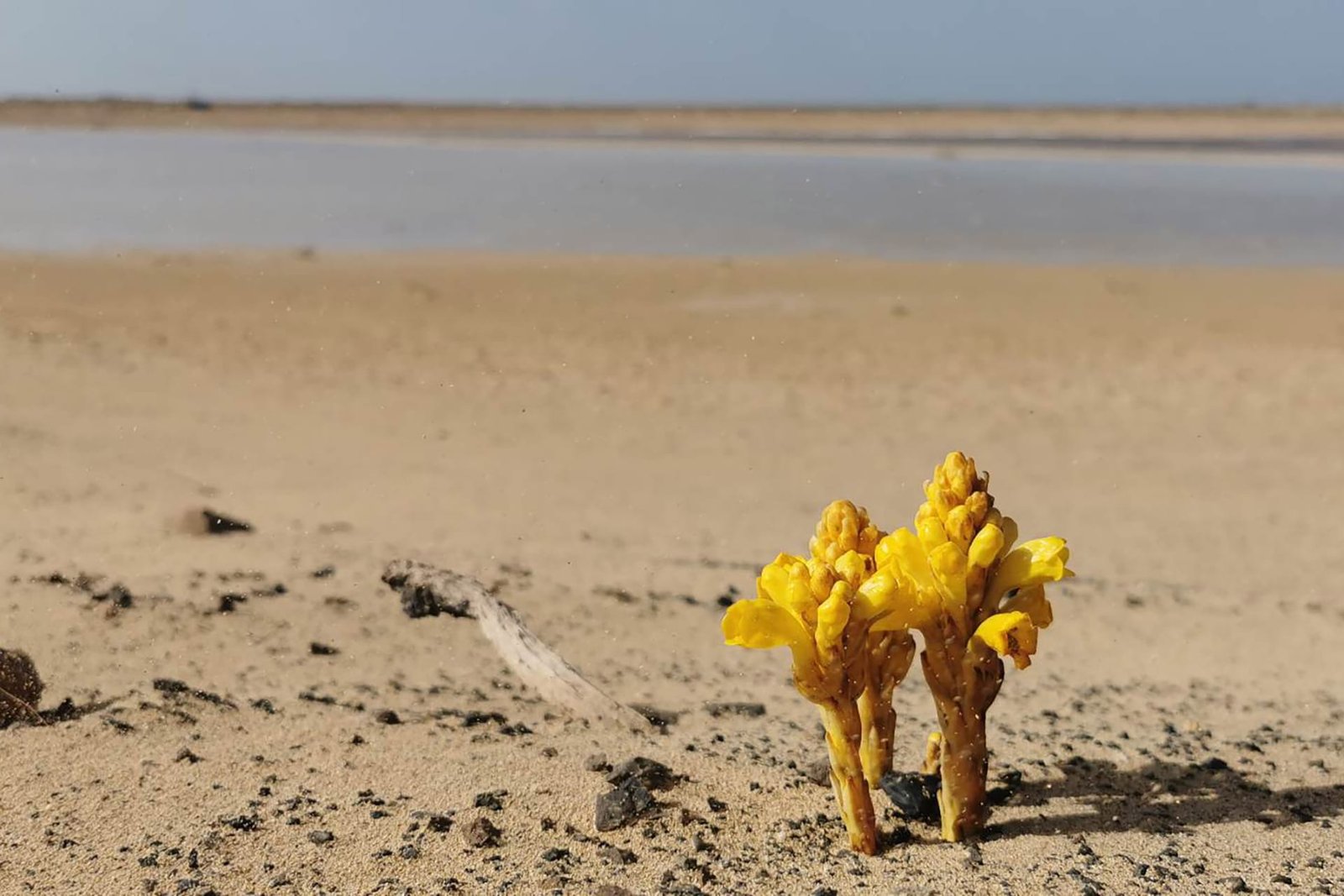
Cistanche phelypaea is a desert plant characterised by stout, flowering stems that bear bright yellow flowers. It can grow up to even 30-50 cm above the ground. Due to its appearance, Cistanche phelypaea is commonly referred to as a yellow desert broomrape, but it is also known as a desert hyacinth.
You might notice that it lacks leaves or any other green parts, which is typical for most other plants. It looks so because Cistanche phelypaea is a parasite that lacks chlorophyll and obtains nutrients and water from the host plants by attacking their roots underground.
Cistanche phelypaea, which grows in Cabo Verde and north-western Africa, is often confused with its similar Asian variety, Cistanche tubulosa.
What Does Desert Hyacinth Look Like?
Cistanche phelypaea has stout, fleshy flowering stems bearing bright yellow flowers and rising to 20–50 cm (7.9–19.7 inches) tall from a generally swollen base. The stem is glabrous and yellow to purple-grey. Leaves are ovate-lanceolate, obtuse, glabrous and typically brown. Inflorescence is dense, more or less cylindrical. The flower crown is broadly campanulate-obconic, strongly curved, bright yellow, sometimes light purple, and glabrous. It has white stigmatic lobes.
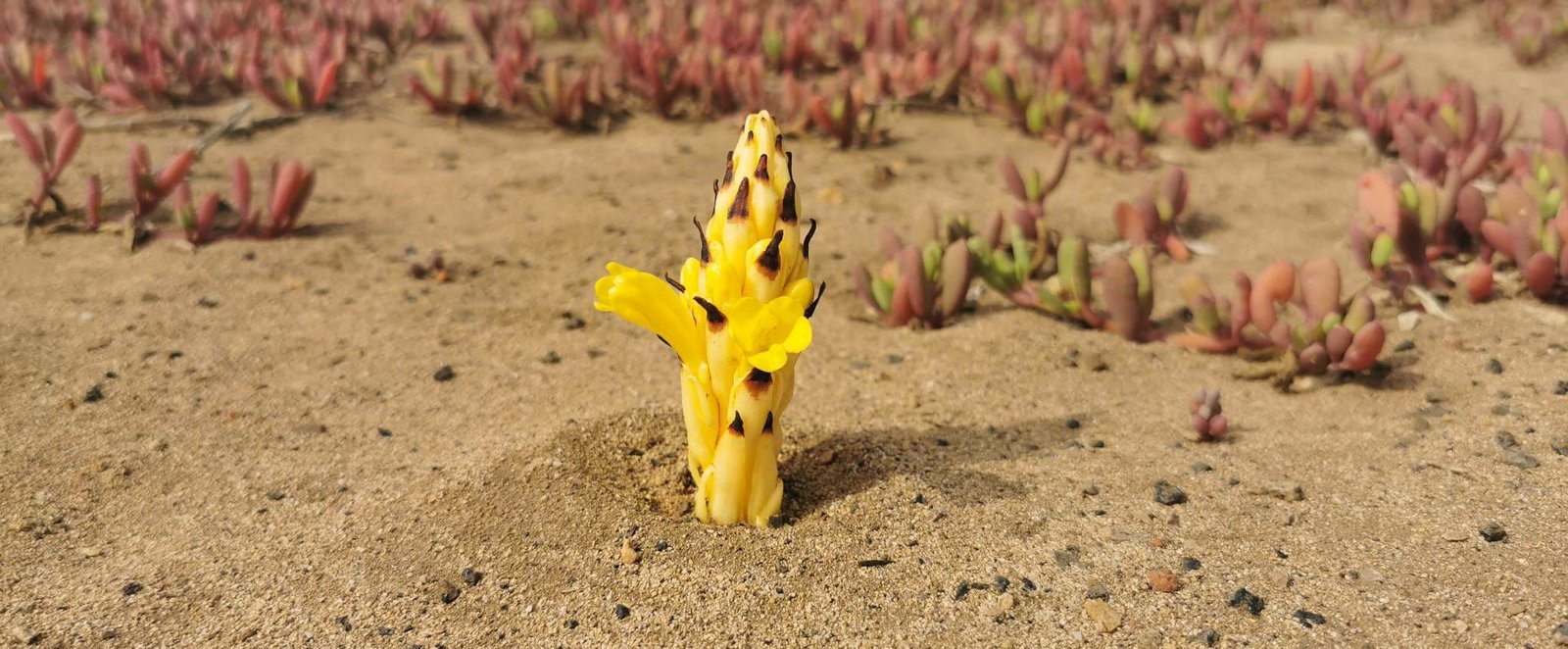
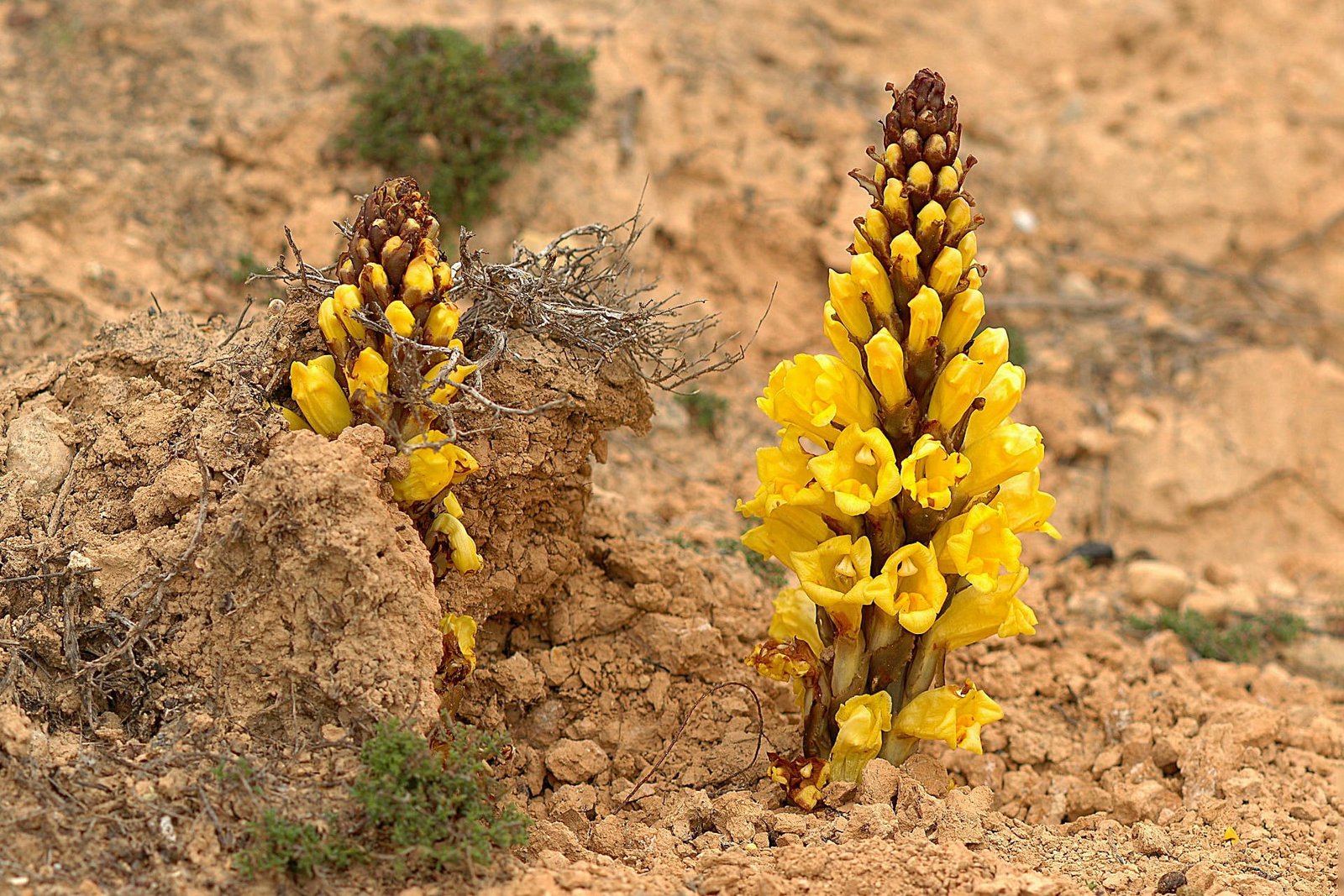
Interesting Facts About the Yellow Desert Hyacinth
It's Edible
Cistanche phelypaea is an edible halophyte of dune environments. It’s gathered from the wild and used locally as a food, quite similar to asparagus. Its flowers are rich in unsaturated fatty acids, sterols and vitamin E, and therefore, can be of interest to the food industry.
It's Used as a Natural Medicine and Food Supplement
Cistanche is considered a top-grade therapeutic agent, often called the “Ginseng of the deserts”, and is used for the treatment of different health problems, as chronic renal disease, impotence, female infertility, morbid leukorrhea and profuse metrorrhagia. It is also described to have sedative, vasorelaxant and aphrodisiac effects and to improve learning skills. Besides its common uses in China, Herba Cistanches is similarly used as a food supplement in Japan and Southeast Asia.
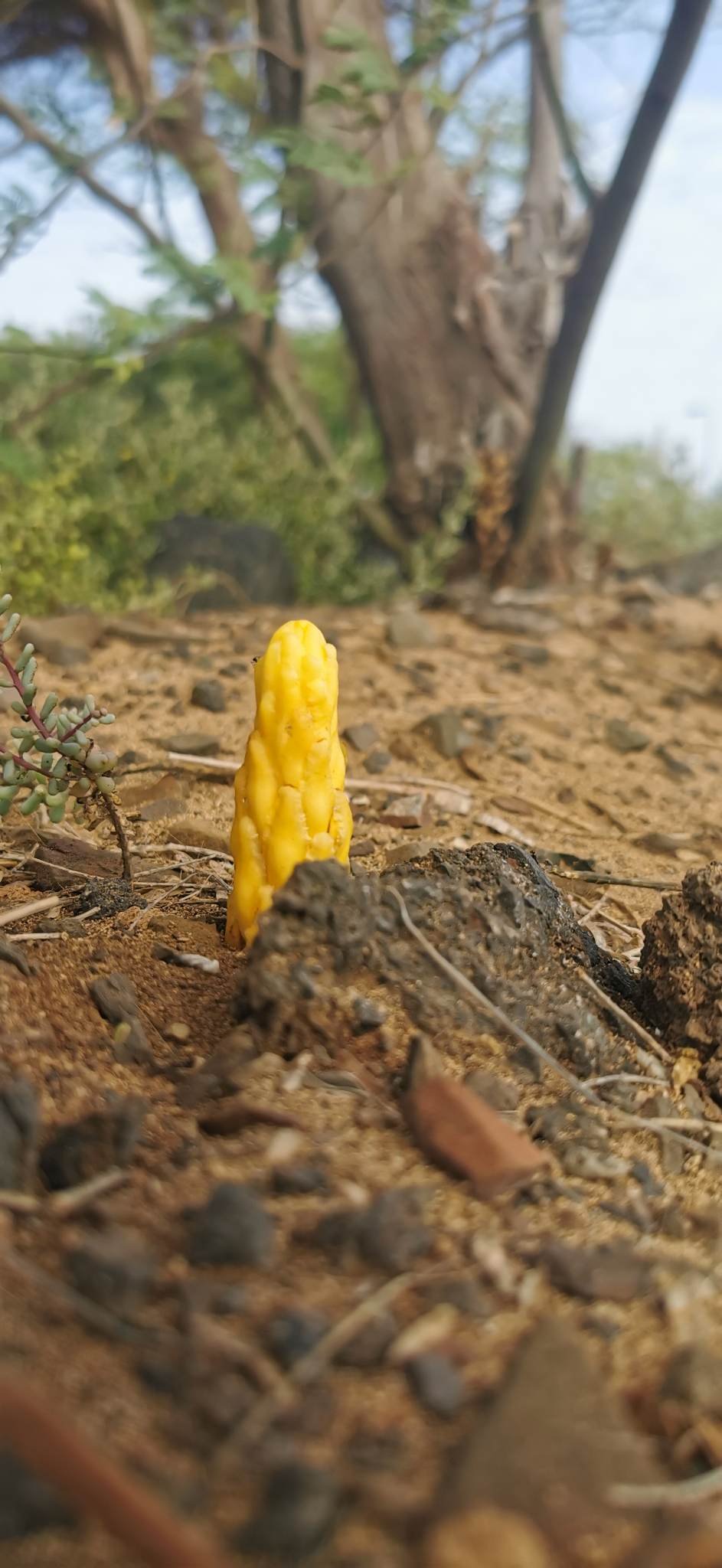
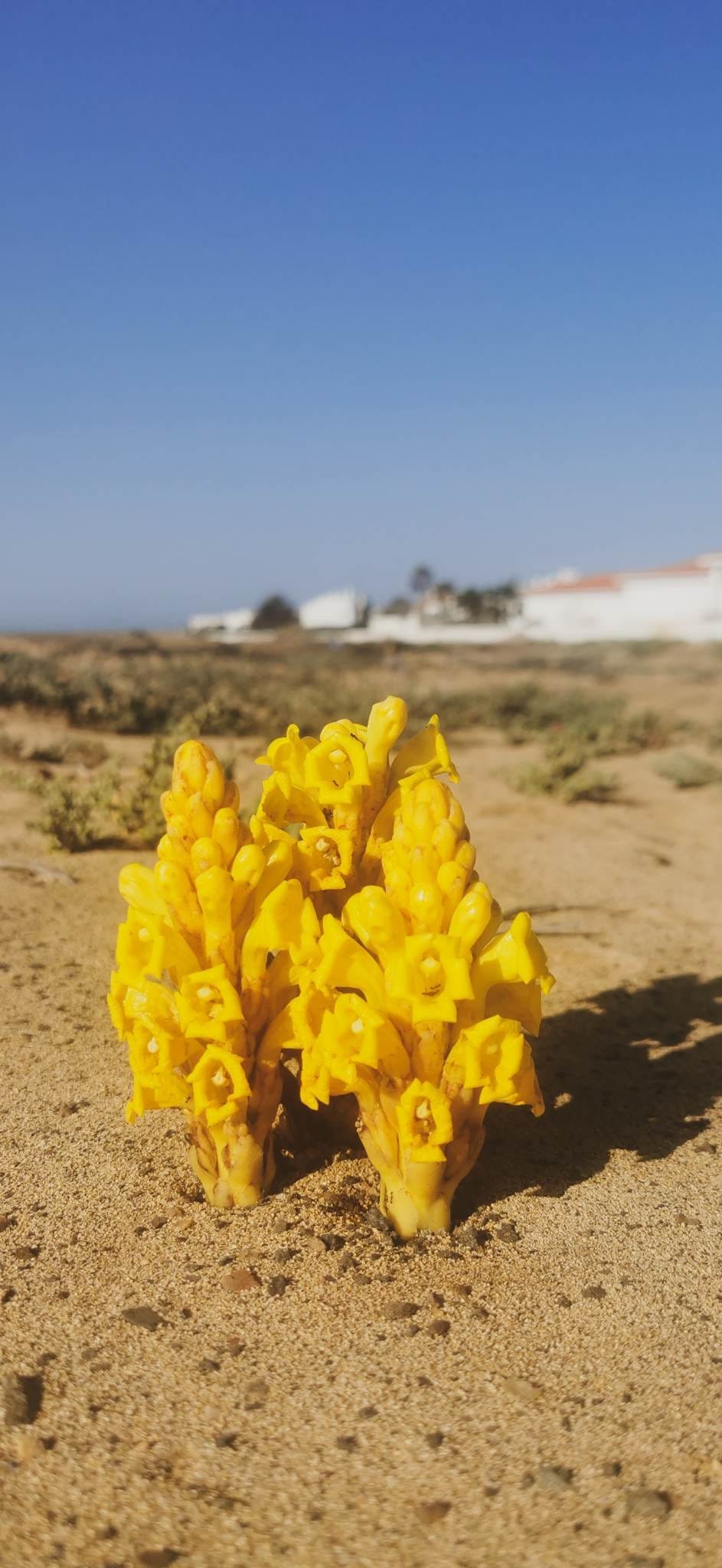
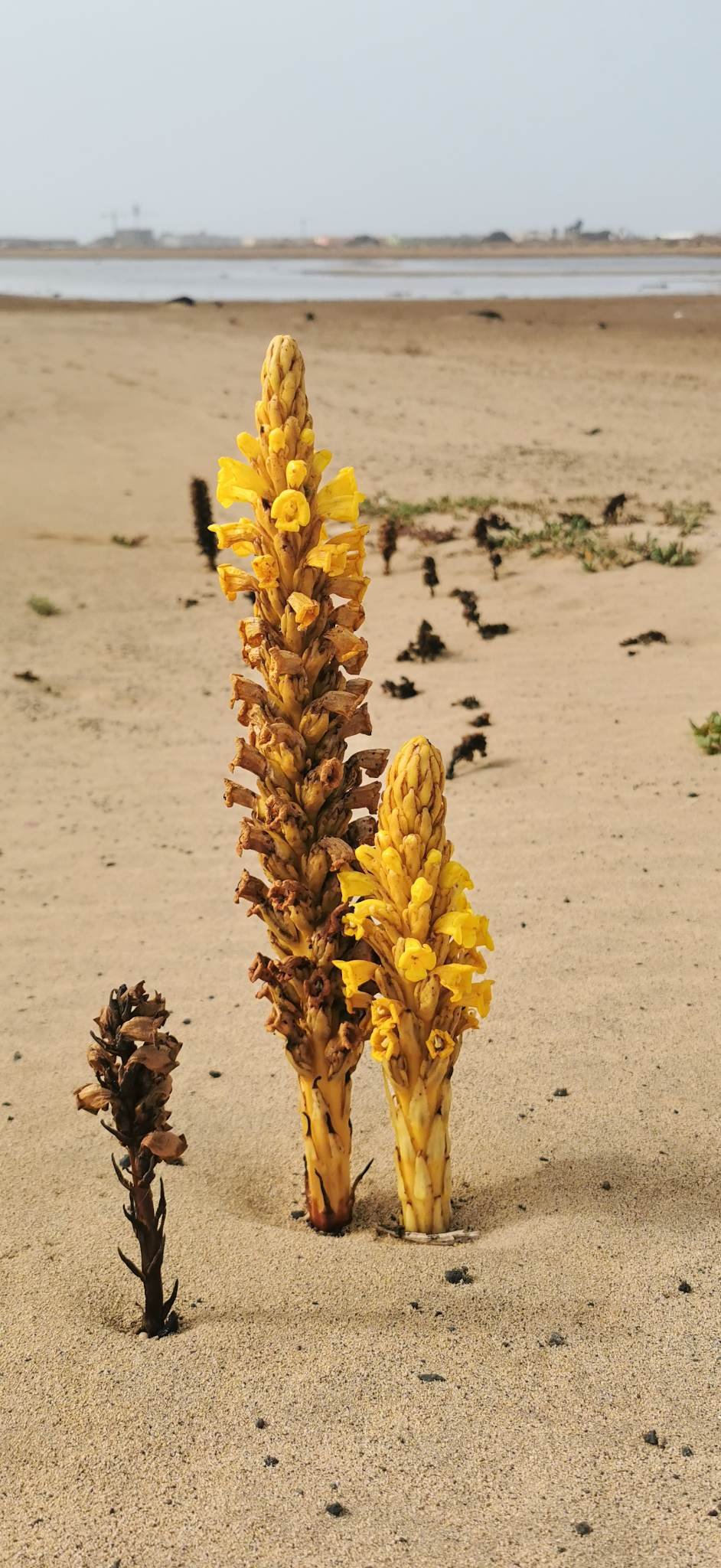
Where Can We Find These plants?
Yellow desert broomrape inhabits dry, saline, sandy sites, mainly the coastline but also inland. At Sal Island, it grows in the desert areas and near the beaches all around the island.
Besides Cabo Verde, in Macaronesia, it grows in the Canary Islands, Savage Islands and Madeira. In Africa, it occupies Djibouti, Ethiopia, Eritrea, Sudan, Egypt, Chad, Libya, Niger, Algeria, Tunisia, Mali, Senegal, Mauritania, Western Sahara and Morocco; in West Asia, Syria, Saudi Arabia, Qatar, Oman, Yemen, and Soqotra; in Southern Europe, Cyprus, Crete, Spain, Portugal.
Bibliography
- Cistanche phelypaea (L.) Cout. – Royal Botanic Gardens KEW, Plants Of The World Online;
- Cistanche phelypaea (L.) Cout. – GBIF | Global Biodiversity Information Facility;
- Cistanche Phelypaea on the Useful Tropical Plants website;
- Exploring the halophyte Cistanche phelypaea (L.) Cout as a source of health-promoting products: In vitro antioxidant and enzyme inhibitory properties, metabolomic profile and computational studies by Francesca Trampetti a, Catarina Pereira a, Maria João Rodrigues a, Odeta Celaj b, Brigida D’Abrosca b, Gokhan Zengin c, Adriano Mollica d, Azzurra Stefanucci d, Luísa Custódio on Science Direct.
